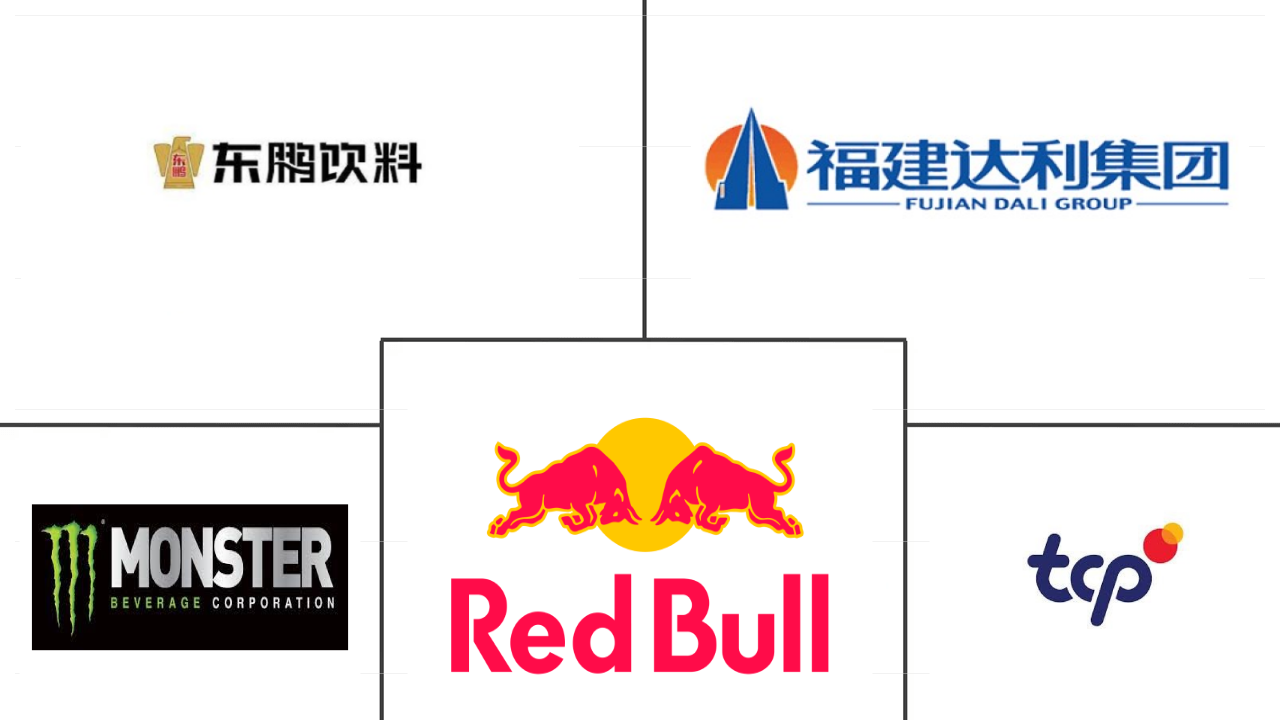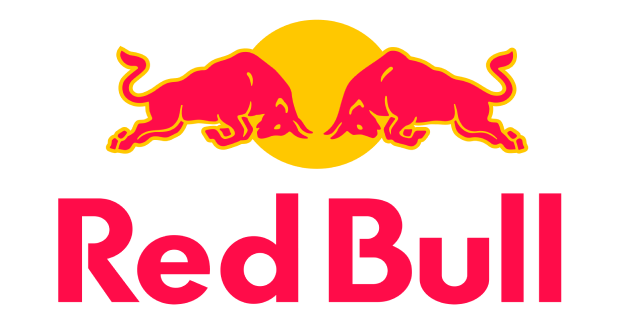Market Size of asia-pacific energy drinks Industry
| Icons | Lable | Value |
|---|---|---|
|
|
Study Period | 2018 - 2030 |
|
|
Market Size (2024) | USD 20.81 Billion |
|
|
Market Size (2030) | USD 31.36 Billion |
|
|
Largest Share by Soft Drink Type | Traditional Energy Drinks |
|
|
CAGR (2024 - 2030) | 7.08 % |
|
|
Largest Share by Country | China |
|
|
Market Concentration | Low |
Major Players |
||

|
||
|
*Disclaimer: Major Players sorted in no particular order |
Asia-Pacific Energy Drinks Market Analysis
The Asia-Pacific Energy Drinks Market size is estimated at 20.81 billion USD in 2024, and is expected to reach 31.36 billion USD by 2030, growing at a CAGR of 7.08% during the forecast period (2024-2030).
20.81 Billion
Market Size in 2024 (USD)
31.36 Billion
Market Size in 2030 (USD)
5.59 %
CAGR (2018-2023)
7.08 %
CAGR (2024-2030)
Largest Segment by Soft Drink Type
45.57 %
value share, Traditional Energy Drinks, 2023
Traditional energy drinks are often marketed as a solution for individuals navigating demanding work schedules and are involved in sports, further contributing to its sales.
Fastest-growing segment by Soft Drink Type
8.67 %
Projected CAGR, Natural/Organic Energy Drinks, 2024-2030
A rising preference for natural ingredients and fewer additives with a focus on health and wellness is anticipated to fuel the demand for natural/organic energy drinks.
Leading Market Player
11.14 %
market share, Red Bull GmbH, 2022

Effective marketing strategies combined with extensive sports and cultural event sponsorship aid the brand in maintaining its prominence and visibility in the Asian market.
Largest Segment by Country
50.04 %
value share, China, 2023
Popularity of energy drinks is attributed to individuals with high workloads and demanding academic schedules or who engage in fitness activities seeking vitality.
Fastest-growing segment by Country
8.99 %
Projected CAGR, China, 2024-2030
Energy drinks' alignment with youth culture, and their popularity through social media influence, contributes to product visibility and consumption among younger demographics.
Consumers are looking for alternative options of carbonated beverages with increasing demand for natural/organic drinks
- Asia-Pacific has witnessed a surge in the popularity of energy drinks, particularly among the millennial and Gen Z demographics. This trend is fueled by a desire for healthier hydration, with consumers increasingly opting for liquid enhancers in their water. Notably, clean-label attributes such as gluten-free, sugar-free, and organic are swaying the choices of sports enthusiasts. Consequently, the sales value of energy drinks in Asia-Pacific market saw a robust 13.37% growth from 2021 to 2023.
- Traditionally, coffee held the caffeine crown, but energy drinks have now dethroned it, especially among the younger population. Energy drinks tout benefits like heightened energy, mental acuity, and physical performance thanks to their caffeine content. The market is also witnessing a surge in demand for clean-label offerings, reflecting a broader shift toward healthier food choices. Notably, in 2022, 12% of Thais and 18% of Vietnamese were consuming energy drinks multiple times a week. Moreover, countries like China, India, and Australia are pivoting away from carbonated soft drinks, favoring sugar-free, low-calorie, and natural/organic energy drinks instead.
- Within the energy drinks segment, the natural/organic variant is emerging as the frontrunner in the Asia-Pacific energy drinks market. It is projected to witness a robust value CAGR of 7.78% from 2024 to 2030. This growth is propelled by rising consumer awareness about the potential hazards of conventional beverage production and a growing appreciation for the benefits of organic products.
The market for energy drinks is poised for growth, driven by a rising demand for products with reduced sugar content and natural ingredients
- From 2021 to 2023, the Asia-Pacific energy drinks market witnessed a robust 13.18% growth in sales by value. This surge in sales can be attributed to factors like urbanization, increasing disposable incomes, and a rising focus on health among consumers. Energy drinks are popularly consumed in the region, primarily for their perceived benefits in enhancing performance, endurance, and alertness.
- China dominates the energy drinks market in Asia-Pacific, boasting the highest consumption levels. In 2023, China saw a remarkable 30.42% surge in energy drink sales compared to 2020. The trend toward energy drinks with lower sugar content and natural ingredients is gaining traction in the region, especially among health-conscious consumers. Notably, brands incorporating natural extracts, like those from coffee beans, are gaining popularity in the region. For instance, in 2023, Monster Energy unveiled a sugar-free variant packing 160 mg of caffeine. Similarly, in 2022, The Coca-Cola Company introduced Fresca Energy, a low-calorie, sugar-free energy drink infused with natural flavors and caffeine.
- Among the Asia-Pacific countries, Vietnam stands out as a rapidly growing market. It is projected to register a CAGR of 6.41% in terms of value from 2023 to 2030. The country's evolving flavor preferences and diverse range of offerings have fueled the demand for sports drinks. In 2023, over 19% of Vietnamese consumers reported consuming energy drinks multiple times a week, while more than 10% indicated a weekly consumption frequency.
Asia-Pacific Energy Drinks Industry Segmentation
Energy Shots, Natural/Organic Energy Drinks, Sugar-free or Low-calories Energy Drinks, Traditional Energy Drinks are covered as segments by Soft Drink Type. Glass Bottles, Metal Can, PET Bottles are covered as segments by Packaging Type. Off-trade, On-trade are covered as segments by Distribution Channel. Australia, China, India, Indonesia, Japan, Malaysia, South Korea, Thailand, Vietnam are covered as segments by Country.
- Asia-Pacific has witnessed a surge in the popularity of energy drinks, particularly among the millennial and Gen Z demographics. This trend is fueled by a desire for healthier hydration, with consumers increasingly opting for liquid enhancers in their water. Notably, clean-label attributes such as gluten-free, sugar-free, and organic are swaying the choices of sports enthusiasts. Consequently, the sales value of energy drinks in Asia-Pacific market saw a robust 13.37% growth from 2021 to 2023.
- Traditionally, coffee held the caffeine crown, but energy drinks have now dethroned it, especially among the younger population. Energy drinks tout benefits like heightened energy, mental acuity, and physical performance thanks to their caffeine content. The market is also witnessing a surge in demand for clean-label offerings, reflecting a broader shift toward healthier food choices. Notably, in 2022, 12% of Thais and 18% of Vietnamese were consuming energy drinks multiple times a week. Moreover, countries like China, India, and Australia are pivoting away from carbonated soft drinks, favoring sugar-free, low-calorie, and natural/organic energy drinks instead.
- Within the energy drinks segment, the natural/organic variant is emerging as the frontrunner in the Asia-Pacific energy drinks market. It is projected to witness a robust value CAGR of 7.78% from 2024 to 2030. This growth is propelled by rising consumer awareness about the potential hazards of conventional beverage production and a growing appreciation for the benefits of organic products.
| Soft Drink Type | |
| Energy Shots | |
| Natural/Organic Energy Drinks | |
| Sugar-free or Low-calories Energy Drinks | |
| Traditional Energy Drinks | |
| Other Energy Drinks |
| Packaging Type | |
| Glass Bottles | |
| Metal Can | |
| PET Bottles |
| Distribution Channel | ||||||
| ||||||
| On-trade |
| Country | |
| Australia | |
| China | |
| India | |
| Indonesia | |
| Japan | |
| Malaysia | |
| South Korea | |
| Thailand | |
| Vietnam | |
| Rest of Asia-Pacific |
Asia-Pacific Energy Drinks Market Size Summary
The Asia-Pacific energy drinks market is experiencing significant growth, driven by a shift in consumer preferences towards healthier and more functional beverages. This trend is particularly evident among millennials and Gen Z, who are increasingly opting for energy drinks over traditional caffeinated options like coffee. The market is characterized by a rising demand for clean-label products, such as those that are gluten-free, sugar-free, and organic, reflecting a broader consumer shift towards health-conscious choices. The popularity of natural and organic variants is on the rise, as consumers become more aware of the potential risks associated with conventional beverage production. This has led to a robust expansion in the market, with countries like China, India, and Australia moving away from carbonated soft drinks in favor of low-calorie and natural energy drinks.
China stands out as a dominant force in the region, with the highest consumption levels of energy drinks, and a notable increase in sales driven by health-conscious consumers seeking lower sugar and natural ingredient options. Vietnam is also emerging as a rapidly growing market, with evolving flavor preferences and a diverse range of offerings fueling demand. The market is fragmented, with major players like Eastroc Beverage(Group) Co., Ltd., Fujian Dali Food Group Co., Ltd., Monster Beverage Corporation, Red Bull GmbH, and T.C. Pharmaceutical Industries Company Limited leading the charge. These companies are actively reformulating their products to meet the increasing consumer demand for healthier options, such as sugar, salt, and fat reduction. The Asia-Pacific energy drinks market is poised for continued growth, supported by urbanization, rising disposable incomes, and a heightened focus on health and wellness among consumers.
Asia-Pacific Energy Drinks Market Size - Table of Contents
-
1. MARKET SEGMENTATION (includes market size in Value in USD and Volume, Forecasts up to 2030 and analysis of growth prospects)
-
1.1 Soft Drink Type
-
1.1.1 Energy Shots
-
1.1.2 Natural/Organic Energy Drinks
-
1.1.3 Sugar-free or Low-calories Energy Drinks
-
1.1.4 Traditional Energy Drinks
-
1.1.5 Other Energy Drinks
-
-
1.2 Packaging Type
-
1.2.1 Glass Bottles
-
1.2.2 Metal Can
-
1.2.3 PET Bottles
-
-
1.3 Distribution Channel
-
1.3.1 Off-trade
-
1.3.1.1 Convenience Stores
-
1.3.1.2 Online Retail
-
1.3.1.3 Supermarket/Hypermarket
-
1.3.1.4 Others
-
-
1.3.2 On-trade
-
-
1.4 Country
-
1.4.1 Australia
-
1.4.2 China
-
1.4.3 India
-
1.4.4 Indonesia
-
1.4.5 Japan
-
1.4.6 Malaysia
-
1.4.7 South Korea
-
1.4.8 Thailand
-
1.4.9 Vietnam
-
1.4.10 Rest of Asia-Pacific
-
-
Asia-Pacific Energy Drinks Market Size FAQs
How big is the Asia-Pacific Energy Drinks Market?
The Asia-Pacific Energy Drinks Market size is expected to reach USD 20.81 billion in 2024 and grow at a CAGR of 7.08% to reach USD 31.36 billion by 2030.
What is the current Asia-Pacific Energy Drinks Market size?
In 2024, the Asia-Pacific Energy Drinks Market size is expected to reach USD 20.81 billion.

